Final Blog Post
Well, here we are once again, but to my reluctance, this will be my last blog post. As this class has come to close, I would like to first bring to light the professor and the leaders who guided us through this trip. It not only made the study of the culture and ecology easier to understand, but also fostered a type of family/friendship that was formed from just one short week. What a blessing it has been.
Every day we saw ants, ants carrying things from leaves to rocks, in a uniform manners as if they new their duty from the get go. From the first day of working in Costa Rica, the connection between man and food was inseparable. What you grew was a what you ate and drank. “Main inputs quantified include costs, labor requirements, fertilizer use and application of crop protection agents. Outputs are production and a number of associated environmental indicators.” (Hensdijk). This seemed to be the over arching theme while I was in Costa Rica. The rich ecology of Costa Rica was anything but hidden, and what is even more apparent was how aware all of the Costa Rican population was in touch with their surroundings and agriculture. From every person we came in contact with we were able to identify something about the food or their environment. The divide between culture and environmental consciousness was so small it seemed that culture was sewn together with ecological conservation. ““Not only were there changes in instructional emphasis, methodology, and basic curricula at the CTPs, but it also recjuired new courses to be taught in such areas as sustainable agriculture, environmental education, computer science, ecotourism, and other areas in which most CTP teachers had not received training,” (Brooks).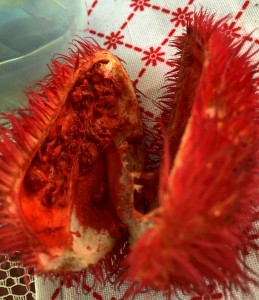
Perhaps what I found most interesting was that even in the most remote areas of Costa Rica, the proper disposal bins were present. It was in that moment that I realized that in Cost Rica’s focus on ecological conservation reverberated throughout all social classes. The idea of protecting the environment was not reserved for the wealthier person, as we typically see in America. To me, the lower income areas of America do not have access to not only green technology, but also organic and healthy food (example: McDonalds vs Whole Foods prices). In Costa Rica, the green lifestyle isn’t bound to just a social class, its apart of the culture. “This shift in resource use decreased social equity by decreasing farm labour opportunities for smallholders and landless farmers and diminishing land available for tenants. These studies indicate that the impact of technology introduction on farming system sustainability can be assessed effectively by conducting integrated socioeconomic and agronomic analyses across farms representing various land-use practices and intensities” (Bellows). At every single stop we made, it seemed that agriculture and proper use of the land was of the utmost and for-front concern.
I noticed this most the first day of working, when we attempted to construct a green house. All of the materials used in the construction of the garden and green house were made from recycled materials. Plastic jugs were buried to for the perimeter of the garden to prevent. “Bench terraces, while reducing erosion, are rare owing to labor shortages. With the exception of polyethylene rain shelters, other agronomic practices do not substantially reduce soil erosion.” (Midmore). Every single jug had its place, as we sweat in the sun, it was hard to overlook the quite poetic reuse of each item. As each individual worker, student, person put in place their individual task, I noticed all the small bugs that jittered around the ground. Each any brought forth a unique item, a specific task to complete a quite challenging or difficult task, to bring something together that wouldn’t have been otherwise.
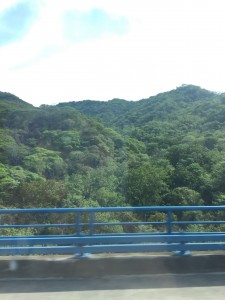
Again the wheels in brain began to turn. When we went back to the university we had a chance to talk to students about how their experience in Costa Rica was, and how the country works together to conserve its rainforest and ecology. All of the food we were eating was grown in Costa Rica, and all of it was done so with environmental sustainability. Not just in the way “we must be green as a movement,” but out of a necessity. The necessity being, if we don’t care for our food source, we won’t have one. The students at the Earth University also commented on how it is all a cohesive effort, like the leaf cutter ants. If one wasn’t on the same page as others, the whole system took a hit. If one was reaping more benefit than others, then the “agricultural assets [reflect] negatively predictive of engagement in plantation wage work,” again showing that if it wasn’t a balanced system, then the network and success of all became compromised (Lansing).
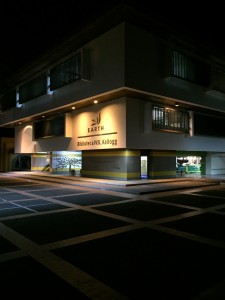
This attitude of food production, was apparent in the guest tour we saw from the students of the Earth University. A group of six students, had a task to produce a food product and attach a business and scientific strategy for their harvest. This is again where the only chance of flourishing was with a group lens. For any major agriculture product, perhaps one of the first tasks is understanding the growing environment, “variables related to production and quality indicators were number of fungicide applications, soil exchangeable calcium (Ca) and acidity, elevation of the terrain, and number of stems per plant” (Castro-Tanzi). Two of the group member had mentioned that a huge part of this project was understanding what types of practices are better suited for growing produce in Costa Rica and what was wasn’t, while the other group members would begin spear heading the business or ecological engineer aspect of the project. The project was beautifully meticulous and so cleanly engineered, that it was hard to not feel lack luster in terms of my group-project experiences. Perhaps what is even more interesting, is that this type of group-cohesiveness transcends just the university setting.
At this point, it may be kind of a stretch, but let us reconnect really quickly. The reason I have been stressing the idea of teamwork is that it is a vital role, especially as it plays into the outlook on sustainability in Costa Rica. The whole idea of the green republic can only be possible when we look at the way all of the actions are taken. It is all focused on community and group, in which this instance, it seems that the sustainability follows the same pattern as El Paso. It appears that the idea of sustainability is built into the culture, not independent and taken on by each individual. The culture focuses itself around sustainability, because it is how Costa Rica has survived. This preserved culture has become the model of sustainability for other nations, showing that living as a green nation is not only possibly, and necessary, but it beneficial.
What I found even more interesting, was that when I asked about the governmental structure of Costa Rica, almost every one mentioned how highly regarded sustainability was. When at La Selva, a rainforest in North Eastern Costa Rica, the information talk before our hike opened up my eyes to how a country can go from a fully forested area, to almost gone, but to a growing and recovering area. In the mid 1900’s, the westernization and economic growth of Costa Rica began in it’s full swing. Hectare after hectare was consumed by either the government or privatized corporation or famers, for strictly cash consumables such as meat, wood, or growing land. By the mid 1970’s almost the entire country was clean of any rainforest. Scientists noticed the danger of losing this ecologically rich area and began to push back in higher quantities than ever before. And thus the movement to replace the forests of Costa Rica began. The biologists and environmental scientist had only a few strongholds left to gain momentum towards ecological conservation, one being La Selva. As time progressed, so did the growth of the station at La Selva, as well as the strength to fight back against rapid consumption of Costa Rica. For the past four decades, the biological station at La Selva has been combating the consumption of the rainforest, through means of scientific data. With huge amounts of papers being published regularly at this location, is it hard to overlook the biological richness that is located at La Selva. In addition to the ant method, the team work of each person who is willing to participate, the volunteers are taking out to a part of the forest to help collect data on the trees of the reserve. The guide (whose name escapes me apologies), explained to us that as global temperatures rise, the trees of La Selva will grow less, causing a feedback loop that will cause a rapid-ization of the weakening of the rainforest. This is seen by the thickness and the height of the tree over periods of time. Our group was blessed with the chance to be apart of this data collection, as well as seeing nature up and near. So near in fact that a wasp nest fell on Clarissa. She was fine after the initial terror. It was clear that again this preservation of a proper ecology was the clear answer to remedying the issues of our environment. The first step is education.
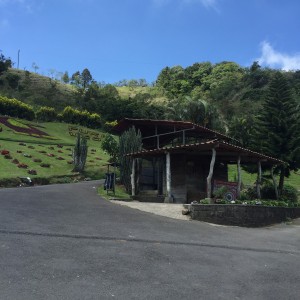
Again, the ant-work method is seen throughout the entirety of the ecological preservation, including in education. Not only is education highly valued in Costa Rica, but every single school is required to have some sort of environmental science or ecological education program. It is the taken on duty of the educators that the ecology holds vast amounts of information that is vital for the younger generation. This offers those to follow a way to come a head start, and a way to again using a cohesive momentum to restore the health of our environment.
All in all, the entirety of Costa Rica has had this hidden lesson sprinkled in many different way throughout this semester. Each person within the class, well shoot, each person on this planet, has a strength and a weakness, and it is our duty as ants of this Earth to work together. Work together to save what we still have, and how we can be able to ensure the future for not only our children, but all of those to come. I suppose it is now our time to be ants once again. Thank you Ecolead. I will surely carry this with me for the rest of my life, and as an ant, I promise to do my best to restore health to you.
This little ant is signing out. From this ant to the next, make sure you carry the leaves with pride and awareness.
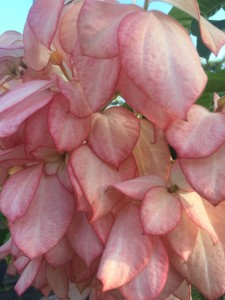
WORKS CITED
Hensdijk, H., et al. “Quantification of land use systems using technical coefficient
generators: a case study for the Northern Atlantic zone of Costa Rica.”
Agricultural Systems 61.2 (1999):109-21. Print.
Midmore, David, Hans Jansen, and Robert Dumbsday. “Soil erosion and environmental impact of vegetable production in the Cameron Highlands, Malaysia.” Agriculture, Ecosystems, and Environment 60.1 (1996): 29-46. Print. Brooks, Lynne Wood. “An approach to providing professional development with an Environmental education component to agriculture teachers in Costa Rica.” Digital Repository at Iowa State University (1997): 1-357. Print.
Bellows, B.C., P.E. Hildebrand, and D.H. Hubbell. “Sustainability of bean production
systems on steep lands in Costa Rica.” Agricultlural Systems 50.4 (1996): 391-
- Print.
Lansing, David, et al. “Placing the plantation in smallholder agriculture: Evidence from Costa Rica.” Ecological Engineering 34.4 (2008): 358-72. Print.
Galt, Ryan E.. Society, Environment, and Place : Food Systems in an Unequal World :
Pesticides, Vegetables, and Agrarian Capitalism in Costa Rica. Tucson, US: University of
Arizona Press, 2014. ProQuest ebrary. Web. 21 May 2016.
Pierre A. D. Stouse, Jr. “Instability of Tropical Agriculture: The Atlantic Lowlands of Costa
Rica.” Economic Geography 46.1 (1970): 78-97. Web.
Castro-Tanzi, Sabastian, et al. “Analysis of management and site factors to improve the sustainability of smallholder coffee production in Tarrazú, Costa Rica.” Agriculture, Ecosystems, and Environment 155.15 (2012): 172-81. Print.
Camacho-Sandoval, J., and H. Duque. “Indicators for biodiversity assessment in Costa
Rica.” Agriculture, Ecosystems and Enviornment 87.2 (2001): 141-50. Print.
“Some indicators — ecosystems quantity, population density or infrastructure — were not desegregated by type of ecosystem.”
Budowski, Gerardo, and Ricardo Russo. “Nitrogen-fixing trees and nitrogen fixation in
sustainable agriculture: Research challenges.” Soil Biology and Biochemistry
29.5-6 (1997): 767-70. Print.